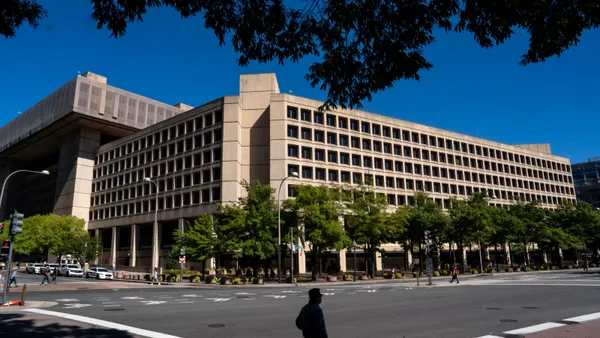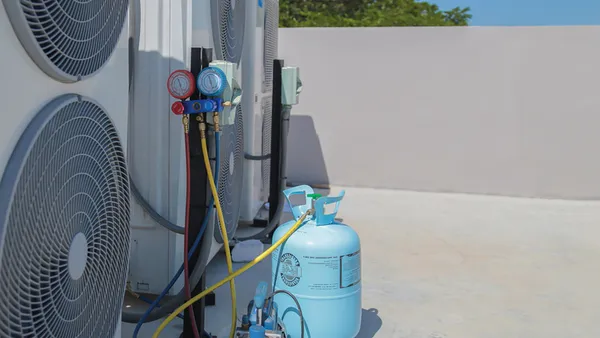Dive Brief:
- Approximately 64% of surveyed organizations say they have reached a steady state with their office utilization, up from 60% last year and 43% in 2022, with many largely accepting hybrid work patterns as a new normal, according to CBRE’s 2024 Americas Office Occupier Sentiment Survey, released Tuesday.
- Companies’ real estate portfolio plans have shifted in 2024, however, with 38% of respondents saying they expect growth, compared with 20% in 2023, CBRE says. While 58% of large companies (those with more than 10,000 employees) still say they are likely to reduce their footprint, 80% of smaller companies (those with fewer than 1,000 employees) say they expect to need more space over the next three years, according to a survey of 225 corporate executives with office portfolios across the U.S., Canada and Latin America.
- Occupiers are prioritizing technology such as enhanced video conference tools, room and space booking software, smart building systems and sensors, occupancy sensors and employee experience applications to better connect hybrid workforces and make space planning more predictable, the survey found.
Dive Insight:
Office tenants are continuing to prioritize adaptability, scalability and technology integrations to navigate the “unpredictable nature of hybrid work and business cycles,” per the report.
Desk-sharing is growing, it found. In 2024, only 40% of companies report having an employee-to-desk ratio of 1:1 or less, down from 56% from last year. CBRE said it expects that figure to drop to just one-third of respondents over the next two years. While most occupiers report having up to two employees per seat, the share of those with three employees per seat is growing, according to its report.
When asked about their top three office technology priorities, 82% of respondents say enhancing video conference tools to support hybrid work, while 64% say room and space booking software that can help manage limited space availability and 43% percent say smart building systems and sensors. Touchless technology and air quality sensors were named by 25% and 23% of respondents, respectively.
Most tenants say they optimize their portfolios by exercising lease expiration and contraction options or consolidating into preferred locations. Other strategies include subleasing excess space and exercising lease break and contraction options, the CBRE report says. While many occupiers have recalibrated their office portfolios to adapt to lower utilization, 61% of respondents say their buildings have enough capacity to accommodate attendance on peak days. The roughly 40% percent of respondents who report that some or most of their buildings lack the capacity to accommodate peak attendance may seek to expand their portfolio to address this challenge, thus increasing office leasing activity, per the report.
More occupiers are integrating flex space into their real estate portfolios to rein in capital expenditures, offer employees meeting and collaboration space on demand and address demand uncertainties. To retain or attract tenants, landlords with flexible space offerings are providing access to on-demand workspaces as short-term needs arise, in addition to offering more traditional concessions like free rent or tenant improvement allowances, the report says.
CBRE notes that tenants also continue to seek higher-quality offices, with 59% of all respondents executing or exploring options to relocate to better-quality office space, led by large, well-capitalized companies. Approximately 57% of occupiers say downsizing while upgrading their offices is a driving factor for relocation; 57% also say they seek improved amenities and services for their employees, the report says.













